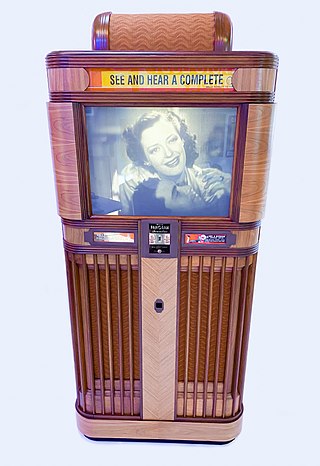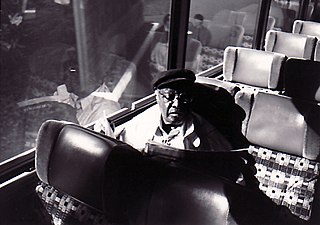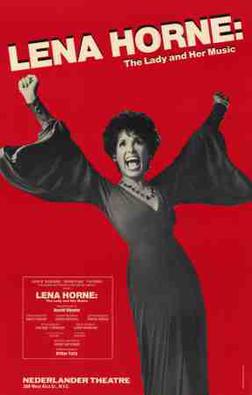Related Research Articles
"Stormy Weather" is a 1933 torch song written by Harold Arlen and Ted Koehler. Ethel Waters first sang it at The Cotton Club night club in Harlem in 1933 and recorded it with the Dorsey Brothers' Orchestra under Brunswick Records that year, and in the same year it was sung in London by Elisabeth Welch and recorded by Frances Langford. Also in 1933, for the first time the entire floor revue from Harlem's Cotton Club went on tour, playing theatres in principal cities. The revue was originally called The Cotton Club Parade of 1933 but for the road tour it was changed to Stormy Weather Revue; it contained the song "Stormy Weather", which was sung by Adelaide Hall.

Cabell Calloway III was an American jazz singer and bandleader. He was a regular performer at the Cotton Club in Harlem, where he became a popular vocalist of the swing era. His niche of mixing jazz and vaudeville won him acclaim during a career that spanned over 65 years.

A soundie is a three-minute American musical film displaying a performance. Soundies were produced between 1940 and 1946 and have been referred to as "precursors to music videos". Soundies exhibited a variety of musical genres in an effort to draw a broad audience. The shorts were originally viewed in public places on "Panorams": coin-operated, 16mm rear projection machines. Panorams were typically located in businesses like nightclubs, bars, and restaurants. Due to World War II, Soundies also featured patriotic messages and advertisements for war bonds. Hollywood films were censored but Soundies weren't, so the films occasionally had daring content like burlesque acts; these were produced to appeal to soldiers on leave.

Lena Mary Calhoun Horne was an American singer, actress, dancer and civil rights activist. Horne's career spanned more than seventy years and covered film, television and theatre.

The Cotton Club was a 20th-century nightclub in New York City. It was located on 142nd Street and Lenox Avenue from 1923 to 1936, then briefly in the midtown Theater District until 1940. The club operated during the United States' era of Prohibition and Jim Crow era racial segregation. Black people initially could not patronize the Cotton Club, but the venue featured many of the most popular black entertainers of the era, including musicians Fletcher Henderson, Duke Ellington, Jimmie Lunceford, Chick Webb, Louis Armstrong, Count Basie, Fats Waller, Willie Bryant; vocalists Adelaide Hall, Ethel Waters, Cab Calloway, Bessie Smith, Lillie Delk Christian, Aida Ward, Avon Long, the Dandridge Sisters, the Will Vodery choir, The Mills Brothers, Nina Mae McKinney, Billie Holiday, Midge Williams, Lena Horne, and dancers such as Katherine Dunham, Bill Robinson, The Nicholas Brothers, Charles 'Honi' Coles, Leonard Reed, Stepin Fetchit, the Berry Brothers, The Four Step Brothers, Jeni Le Gon and Earl Snakehips Tucker.

Jitterbug is a generalized term used to describe swing dancing. It is often synonymous with the lindy hop dance but might include elements of the jive, east coast swing, collegiate shag, charleston, balboa and other swing dances.

Irving Harold Mills was a music publisher, musician, lyricist, and jazz promoter. He often used the pseudonyms Goody Goodwin and Joe Primrose.

Milton John Hinton was an American double bassist and photographer.

Stormy Weather is a 1943 American musical film produced and released by 20th Century Fox, adapted by Frederick J. Jackson, Ted Koehler and H.S. Kraft from the story by Jerry Horwin and Seymour B. Robinson, directed by Andrew L. Stone, produced by William LeBaron and starring Lena Horne, Bill "Bojangles" Robinson, and Cab Calloway. The film is one of two Hollywood musicals with an African American cast released in 1943, both starring Lena Horne, the other being MGM's Cabin in the Sky. Stormy Weather is a primary showcase of some of the leading African American performers of the day, during an era when African American actors and singers rarely appeared in lead roles in mainstream Hollywood productions. The supporting cast features the Nicholas Brothers in arguably the screen's most bravura dance sequence, Fats Waller, Katherine Dunham and her dancers, and Dooley Wilson. Stormy Weather takes its title from the 1933 song of the same title, which is performed almost an hour into the film. It is loosely based upon the life and times of its star, dancer Bill "Bojangles" Robinson.

That's Black Entertainment is a 1989 documentary film starring African-American performers and featuring clips from black films from 1929–1957, narrated and directed by William Greaves. The clips are from the Black Cinema Collection of the Southwest Film/Video Archives at Southern Methodist University in Dallas, Texas. It is 60 minutes long and was distributed by Video Communications of Tulsa, Oklahoma.
Cab Calloway's Hi-De-Ho is an American musical short film directed by Fred Waller and released by Paramount Pictures in 1934. The film stars jazz bandleader Cab Calloway and actress Fredi Washington. In 2001, the film was reissued by Kino International in the DVD collection Hollywood Rhythm: Vol. 1-The Best Of Jazz And Blues.

Lena Horne: The Lady and Her Music was a 1981 Broadway musical revue written for and starring American singer and actress Lena Horne. The musical was produced by Michael Frazier and Fred Walker, and the cast album was produced by Quincy Jones. The well received show opened on May 12, 1981, at the Nederlander Theatre and after 333 performances, closing to go on tour on June 30, 1982, Horne's 65th birthday. Horne toured with the show in the U.S. and Canada and performed in London and Stockholm in 1984.
Jive talk, also known as Harlem jive or simply Jive, the argot of jazz, jazz jargon, vernacular of the jazz world, slang of jazz, and parlance of hip is an African-American Vernacular English slang or vocabulary that developed in Harlem, where "jive" (jazz) was played and was adopted more widely in African-American society, peaking in the 1940s.

Minnie the Moocher is a 1932 Betty Boop cartoon produced by Fleischer Studios and released by Paramount Pictures.
Ethel Moses was an American stage and film actress, and dancer. She was billed as "the black Jean Harlow". Moses is best known for working in films by Oscar Micheaux.
The Cotton Club Boys were African American chorus line entertainers who, from 1934, performed class act dance routines in musical revues produced by the Cotton Club until 1940, when the club closed, then as part of Cab Calloway's revue on tour through 1942.
The Missourians were an American jazz band active in the 1920s, who performed at the Cotton Club in New York City and eventually became the backing band for Cab Calloway.
Emmett "Babe" Wallace, was an American singer, stage performer, composer, actor, and poet. His decades long career included many years performing abroad in Europe and Israel. He featured on stage and screen. The New York Public Library has a collection of his papers in the Schomburg Center for Research in Black Culture.
Black and Tan clubs were nightclubs in the United States in the early 20th century catering to the black and mixed-race ("tan") population. They flourished in the speakeasy era and were often popular places of entertainment linked to the early jazz years. With time the definition simply came to mean black and white clientele.
Lillette Jenkins-Wisner (1924–2020) was an American vocalist and jazz pianist. Duke Ellington dubbed her the “Queen of the Keys”.
References
- ↑ Pratt, Douglas (2004). Doug Pratt's DVD: Movies, Television, Music, Art, Adult, and More!. UNET 2 Corporation. p. 562. ISBN 978-1-932916-00-3.
- ↑ Lefkovitz, Aaron (2017). Transnational Cinematic and Popular Music Icons: Lena Horne, Dorothy Dandridge, and Queen Latifah, 1917-2017. Lexington Books. p. 5. ISBN 978-1-4985-5576-0.